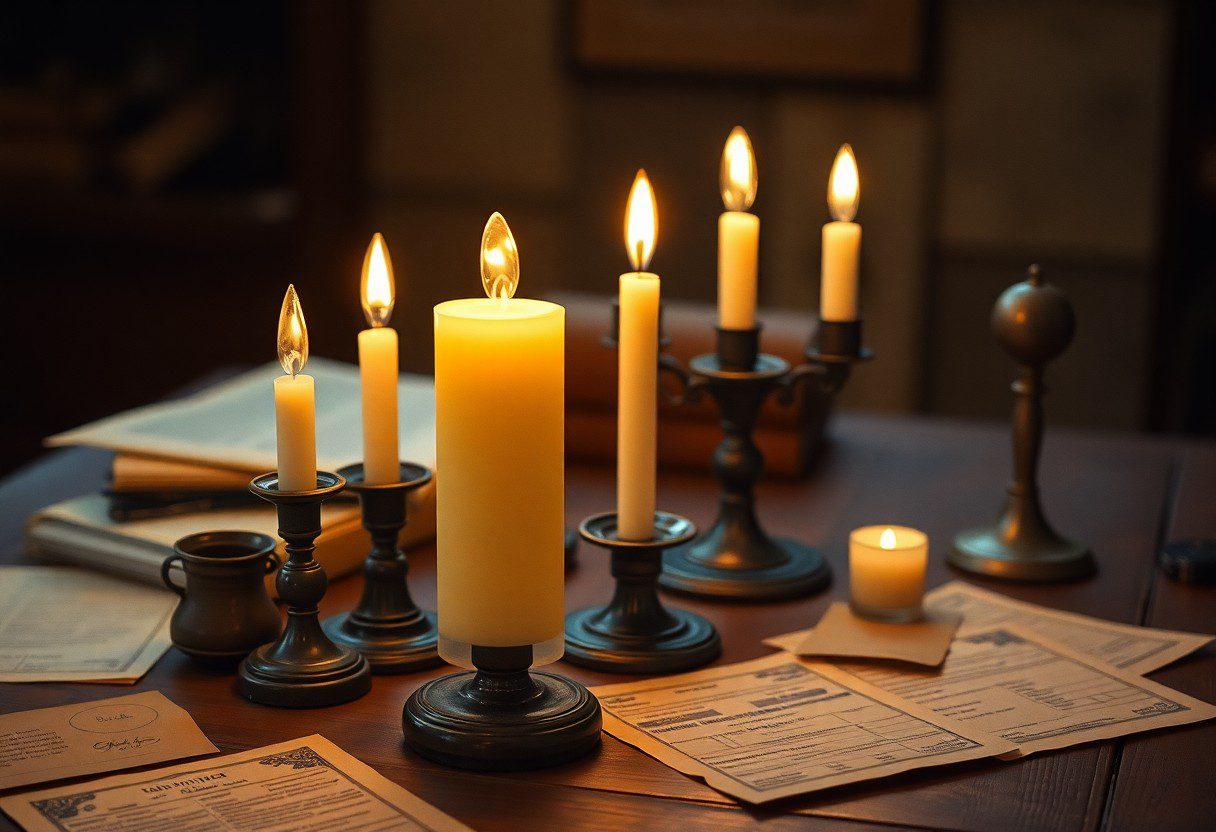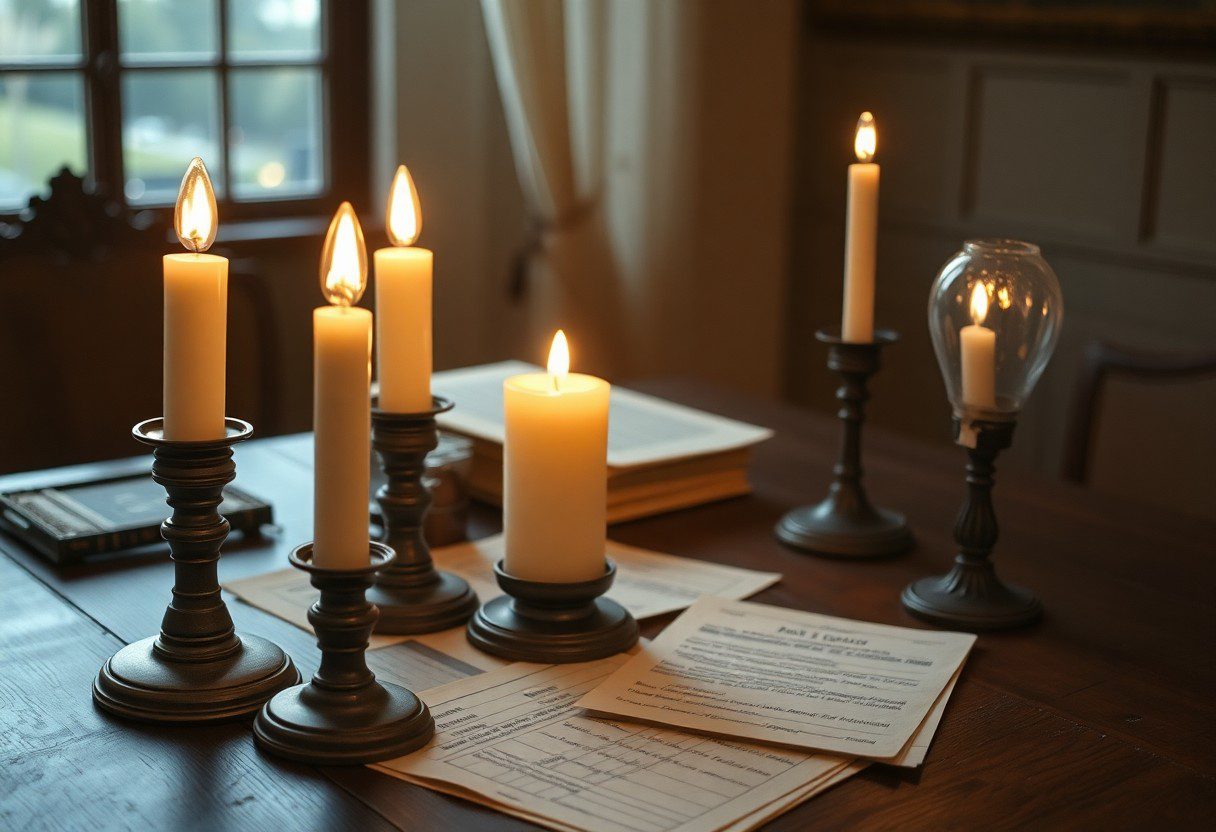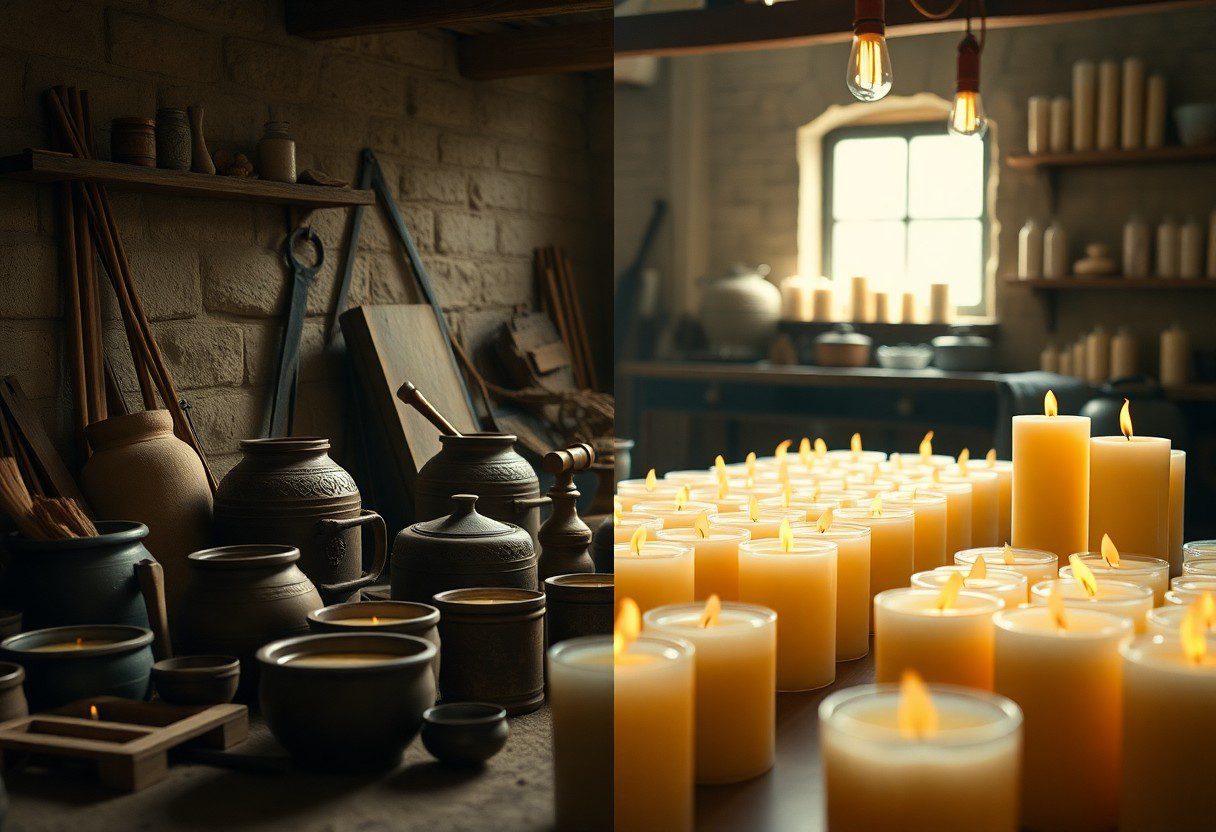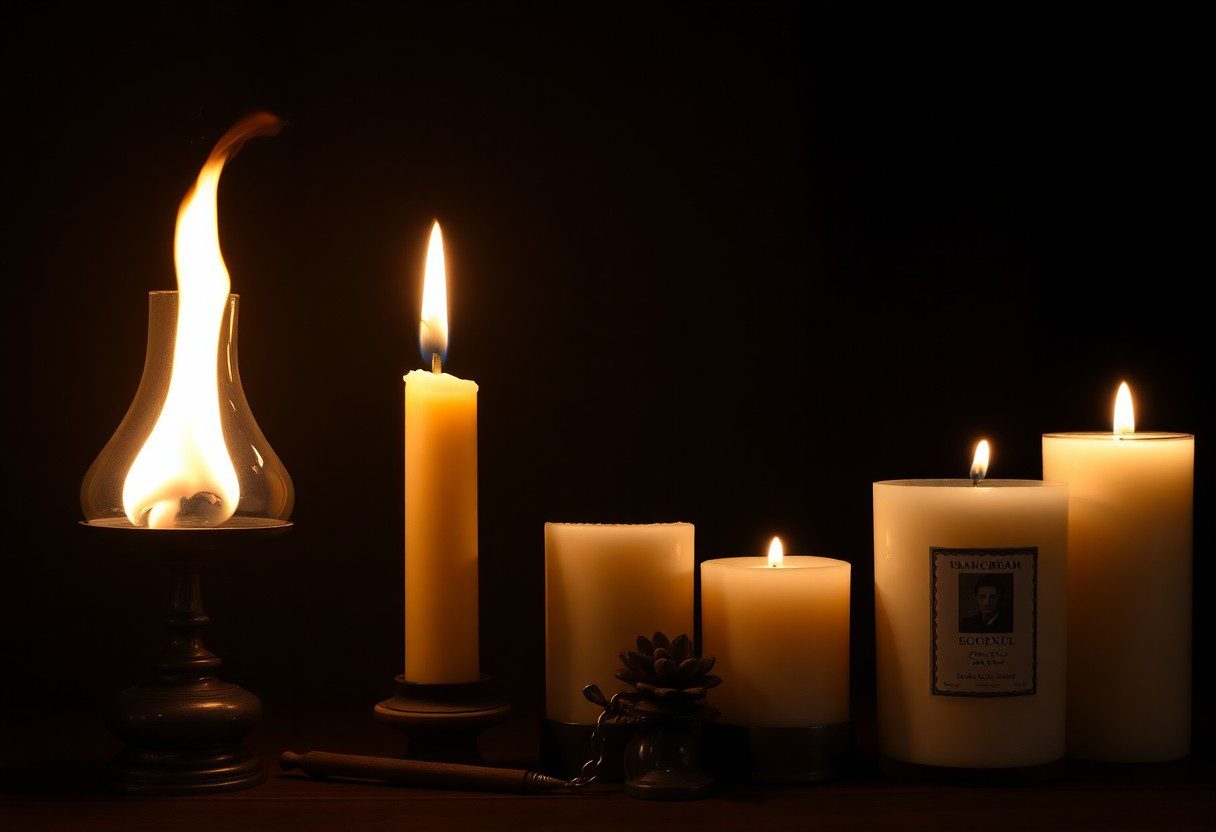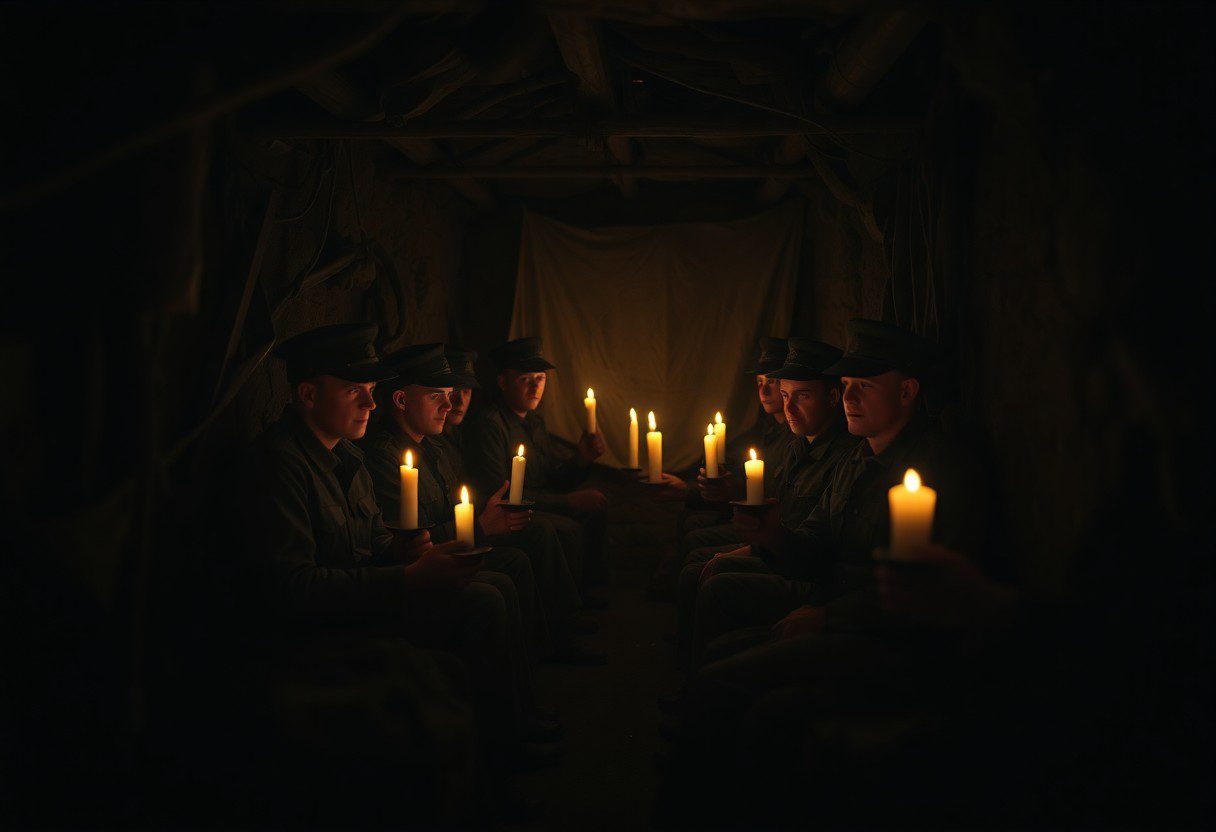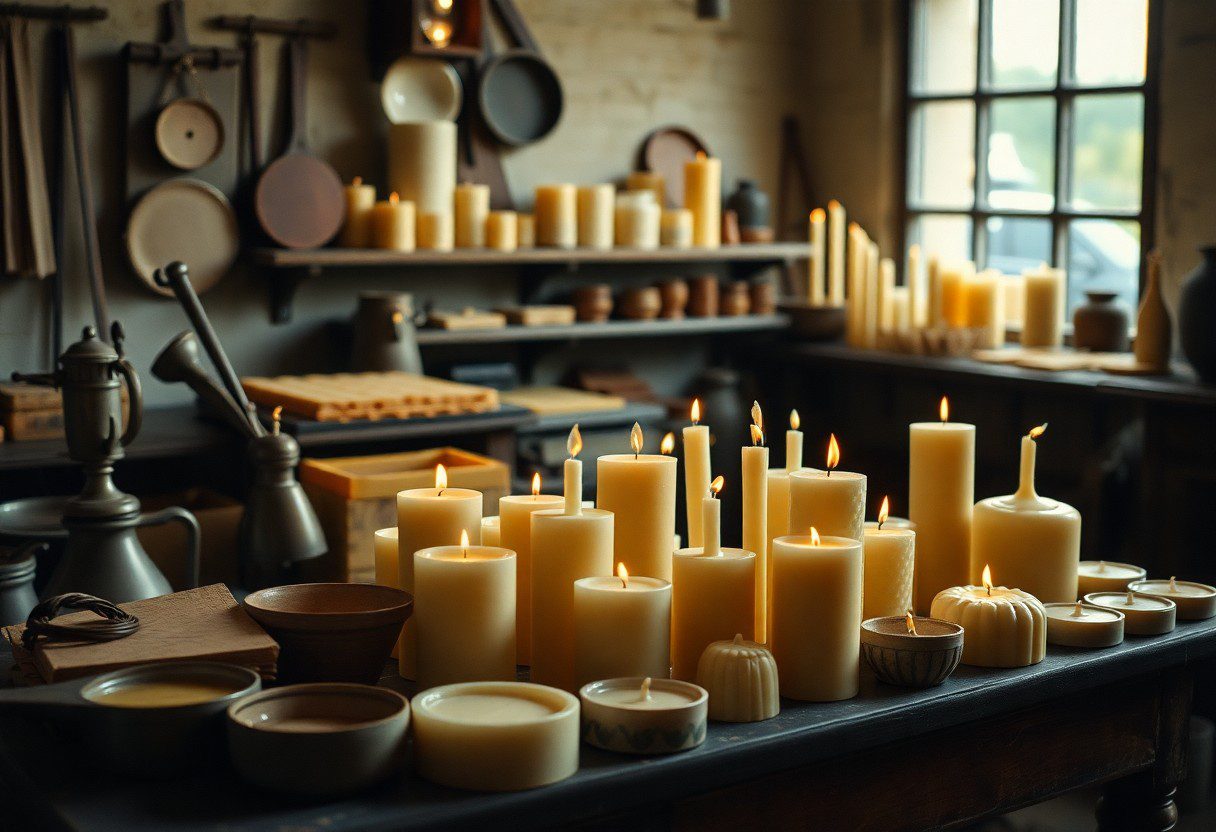The Candle Tax – A Historical Look At Regulation And Its Impact On Candle Usage
Regulation of candle production dates back centuries, influencing both economic policies and social behaviors. In this blog post, you will explore the fascinating history of the Candle Tax, a significant levy that shaped how people utilized candles in their daily lives. Understanding these regulations sheds light on the impact of taxation on consumer habits and the evolution of candle-making practices through the ages. Join us as we examine how these historical measures affected your ancestors, and what it means for your modern-day usage of candles.
Historical Context of Candle Regulation
Your understanding of candle regulation dates back centuries, often shaped by the lighting needs and economic realities of different societies. From the early regulations set forth to manage resources and maintain public order, to more complex taxation systems introduced in later years, the history of candle usage is deeply intertwined with legislative efforts aimed at addressing societal needs. As you explore this history, you’ll see how these regulations reflected broader economic and social frameworks of their respective times.
Early Regulations and Their Purposes
Their origins can be traced to a time when candles were among the few reliable sources of light, vital for daily activities after sunset. Countries recognized the importance of this commodity, implementing early regulations to ensure fair pricing, effective distribution, and the proper training of chandlers (candle makers). These regulations served multiple purposes: to prevent fraud, control quality, and protect consumers from substandard products that could pose safety hazards.
The Candle Tax of the 17th Century
Between the 16th and 17th centuries, the candle tax emerged as a significant regulatory measure in several European nations, particularly in England. Governments imposed this tax as a means to increase revenue while also attempting to impose order on the candle industry, which was growing rapidly alongside urbanization. The tax affected various classes of society, leading to debate and discontent about the implications for ordinary users as well as manufacturers, illustrating a tension between state revenue needs and citizens’ rights to affordable lighting.
For instance, the candle tax was not a mere financial burden; it also highlighted societal disparities. Wealthier classes could easily absorb the costs, using them as a status symbol, while lower-income households struggled to keep their homes lit. The impact was twofold: citizens were forced to adapt to reduced use of candles due to financial constraints, and those seeking profit in the candle trade faced regulatory challenges that often stifled innovation. As you consider the implications of this tax, it becomes evident that early candle regulations and taxes shaped usage patterns and access to necessary lighting long before the advent of modern electric solutions.
Economic Impact of the Candle Tax
Financial Burden on Consumers
For many households, the introduction of the candle tax has added a significant financial burden. You may have noticed that the prices of your favorite scented candles or decorative pieces have surged, as producers pass on the cost of the tax to consumers. This increase not only affects your budget but also alters your purchasing habits. As the cost of these items rises, you may find yourself purchasing fewer candles or opting for cheaper alternatives, which can diminish the overall enjoyment and quality of products you once cherished.
Effects on Candle Producers and the Market
Between the imposition of the candle tax and its ripple effects throughout the market, candle producers face challenges that can shift the landscape of the industry. You might be surprised to learn that smaller artisans and independent brands often bear the brunt of regulatory changes like these, as they generally have fewer resources to absorb increased costs. This means that some producers may need to reconsider their business models, leading to fewer options for you as a consumer. Furthermore, established companies might experience increased competition from black-market producers who evade taxation, which poses risks not only to your safety but also undermines the integrity of the market.
Economic pressures resulting from the candle tax have the potential to change the dynamics of the entire industry. Some manufacturers might respond by innovating and developing new products, while others may struggle to maintain profitability and, in worst-case scenarios, face closure. This phenomenon can lead to a reduction in product diversity within the market, ultimately limiting your choices. The candle market operates within a delicate balance, and interference such as taxation may disrupt this equilibrium, prompting a re-evaluation of what consumers seek and value in their purchases.
Societal Reactions to the Candle Tax
While the introduction of the candle tax aimed at generating revenue and regulating usage, it quickly ignited a surge of public sentiment against the government’s decision. This reaction stemmed from the perception that such taxation encroached on personal freedoms and day-to-day comforts. As candle consumption was deeply embedded in domestic life, many individuals viewed the tax not merely as a financial burden, but as an unwarranted intrusion into their homes that could negatively affect the atmosphere and ambiance they cherished. The backlash was not solely based on economic consequences but also reflected a broader resistance to perceived governmental overreach.
Public Opposition and Protests
After the candle tax was enacted, public opposition emerged in various forms, ranging from vocal protests to organized campaigns aimed at repealing the legislation. People gathered in the streets with candles held high, signifying both their defiance and commitment to preserving their beloved traditions. Pamphlets circulated encouraging individuals to light candles as acts of rebellion against the tax, promoting a sense of unity among those affected. The movement drew attention not only from citizens but also from sympathetic local businesses that relied on candle sales for their livelihoods, further amplifying the clamor for change.
Cultural Shifts in Candle Usage
Any time a new regulation is imposed, it often leads to a reevaluation of the practices it impacts. The candle tax prompted consumers to shift from traditional candle usage, traditionally seen as a staple for both utility and ambiance, towards alternative lighting solutions like gas and electric lights. While some embraced the changes as modern innovations, others fought to uphold the cultural significance of candles, viewing them as symbols of warmth and comfort that could not be easily replaced. The interaction between regulation and personal choice led to a substantial rethinking of how you incorporate candles into your lifestyle.
Indeed, the societal shifts caused by the candle tax resulted in a fascinating dichotomy. On one hand, the economic burden pushed many to seek out more efficient lighting methods, sparking early adoption of electric lights. On the other, this very shift fueled a backlash that cherished and celebrated the traditional, soothing glow of candles, leading to a resurgence in artisanal candle-making and the promotion of candles as a luxurious and thoughtful gift. This period ultimately showcased how regulation could inadvertently preserve cultural practices while simultaneously driving innovation in lighting technology.
Legal and Political Outcomes
Changes in Legislation
For decades, the Candle Tax has sparked numerous debates surrounding the intersection of commerce and politics. Initially, regulations were enacted as a means to secure revenue and manage product distribution; however, over time, public outcry led to significant shifts in the way lawmakers view this industry. As you research into the history of candle legislation, you will find that the backlash from both consumers and candle makers prompted adjustments in tax structures, often resulting in the reduction or elimination of certain governmental fees aimed at candles. These changes reflect a broader trend towards balancing economic needs with public sentiment.
Long-Term Impacts on Regulations
On a larger scale, the evolution of legislation concerning candles illustrates profound changes in how regulations shape market behaviors and consumer choices. As you explore the long-term consequences of these laws, you’ll notice that regulations often foster innovation and competition within the industry. The repeal or reduction of restrictive laws generally encourages more artisan producers to enter the market, thereby enriching the variety of candles available to consumers. What’s more, greater accessibility to candle-making materials and fewer regulatory burdens can lead to a flourishing DIY culture, granting individuals the freedom to express themselves through personalized candle designs.
Another impact of the Candle Tax’s historical regulation is the establishment of a more robust framework for product safety standards. As candle production scaled up, lawmakers found it necessary to implement guidelines aimed at preventing fire hazards and ensuring that consumers were protected. You may find it interesting that this shift has not only contributed to a safer home environment but has also led to an increase in consumer confidence. Ultimately, these long-standing regulations have solidified the candle industry’s reputation, paving the way for enhanced sustainability practices and the embracing of eco-friendly options, which resonate well with contemporary consumer values.
Comparison with Modern Regulations
Once again, the historical context of the candle tax provides valuable insights into how regulations evolve in response to societal needs. Today, while candle usage is primarily influenced by market forces and consumer preferences, some regulations do hinge on safety standards and environmental considerations, reflecting a modern approach to governance. Candles are subject to regulations concerning their composition and the materials used, which aim to mitigate health risks from harmful substances. Such regulations share a resemblance to historic tax motivations that sought to manage and control the production and consumption of various goods, including Candles, Salt, Soap, Starch, Leather, Paper, Textiles, and Glass.
Table of Modern Regulations vs. Historical Candle Tax
| Aspect | Historical Candle Tax |
|---|---|
| Purpose | Revenue generation for the crown |
| Regulation Type | Consumption-based taxation on non-crucial items |
| Modern Parallel | Regulations addressing safety and environmental impacts |
Contemporary Candle Taxation
Below the surface of today’s candle market, specific forms of taxation are still evident, especially as they relate to luxury or non-crucial status. Some regions may impose sales taxes on products categorized as indulgences—this includes decorative candles, scented candles, and novelty items. While you might not encounter a designated ‘candle tax’ as in historical contexts, these regulatory nuances subtly echo the aims of earlier practices, where governments sought to regulate lifestyles and expenditures through taxation.
Additionally, contemporary candle manufacturers are frequently required to comply with safety standards that govern the types of wax used and the labeling of ingredients. Stricter regulations regarding the use of volatile components in scented candles represent a shift towards consumer safety and wellness. This mirrors the past when governments sought to protect their citizens from potential harms associated with unregulated products.
Lessons Learned from Historical Practices
Alongside the differences in modern regulation, you can draw important lessons from the historical practices surrounding the candle tax. The past shows that regulations often serve as a means of encouraging responsible consumption, deterring harmful practices, and managing industry standards. For example, the imposition of taxes on candles invited scrutiny towards manufacturing processes, compelling producers to ensure quality and safety. At the same time, it demonstrated the ability of effective regulation to channel demand toward sustainable production practices.
Also, understanding these lessons provides you with a framework for appreciating modern regulatory measures. The historical candle tax reveals that government intervention can be both a means to generate revenue and a strategy to protect consumers. In the contemporary landscape, this awareness can inform your decisions about purchasing candles, as you consider factors such as ingredient transparency and environmental impact, allowing you to support brands that align with your values.
The Legacy of the Candle Tax
All throughout history, the Candle Tax has revealed the layered complexities of taxation and regulation in society. Introduced in the 17th century, this tax served a dual purpose: generating revenue for the state while simultaneously acting as a means of controlling consumption among the population, particularly the lower classes. The imposition of such a tax influenced the affordability and accessibility of lighting options. For further insights, you can read about Lights out: the history of the Candle Tax – Dec 16, 2022. Ultimately, this historical precedent has shaped not only how you view candle usage today but also how government interventions can alter lifestyle choices.
Influence on Current Candle Industries
On observing the modern candle industries, you can see echoes of the past that continue to influence production and consumption patterns. The rise of artisanal and eco-friendly candles reflects a consumer base that appreciates quality and sustainability rather than quantity. This shift can be traced back to regulatory frameworks like the Candle Tax, which made low-quality, mass-produced items less desirable. The demand for unique, fragrant, and hand-poured candles illustrates a notable evolution in your preferences, diverging from the simple utility that candles once served.
Reflection on Regulatory Practices
For those pondering the role of regulation, the Candle Tax provides a rich backdrop for understanding the implications of policy decisions in consumer markets. Taxes often shape industry dynamics, affecting not just pricing but also product offerings. You may consider how similar regulations today can have lasting impacts on sectors ranging from food to energy. As observed with the Candle Tax, regulations sometimes aim to deter consumption while raising funds, but they can also stifle innovation and lead to unintended consequences.
And as you reflect on these regulatory practices, it becomes evident that while the intent may have been to control behavior, the fallout of such measures often diverges from expectation. Consumer demand can shift, leading to the emergence of black markets or underground production. Moreover, the legacy of the Candle Tax remains a potent reminder of how regulatory measures can sometimes hinder market growth rather than promote it, challenging you to think critically about the balance between governance and individual freedom.
To wrap up
With this in mind, you can see how the Candle Tax reflects broader themes in regulation and consumer behavior throughout history. The imposition of this tax not only impacted the production and consumption of candles but also altered societal norms, pushing people to seek alternatives and innovate in ways that aligned with their economic realities. Understanding this historical precedent enables you to appreciate the complex relationship that exists between governmental policies and everyday items like candles, which have been integral to human life for centuries.
Your exploration of the Candle Tax offers valuable insights into how regulation can shape industries and affect lifestyle choices. As you reflect on this historical narrative, consider how similar regulations today continue to influence your own choices and behaviors. By recognizing these patterns, you can approach modern-day policies with a more informed perspective, ensuring your decisions are well-informed by the lessons learned from the past.
FAQ
Q: What was the primary reason for the introduction of the Candle Tax?
A: The Candle Tax was introduced primarily as a measure to generate revenue for the government. In the 18th century, candles were a widely used commodity, and taxing them allowed the government to fund various public services and initiatives. Additionally, the tax was aimed at regulating the production and sale of candles, which helped to monitor the industry for quality and standardization. By imposing such a tax, the government could also keep track of candle manufacturers and retailers, ensuring compliance with the new regulations.
Q: How did the Candle Tax affect candle production and usage during its implementation?
A: The implementation of the Candle Tax had a significant impact on both production and usage patterns. Many smaller candle makers found it financially difficult to comply with the tax, leading to a consolidation of the industry where larger, established companies dominated the market. As a result, the variety of candles available diminished, and consumers had fewer options. Additionally, some households reduced their use of candles in favor of more affordable alternatives like oil lamps, they began to utilize candles less frequently as a result of the associated costs. This shift altered how candles were perceived, transitioning their use from an vital household item to a luxury or seasonal commodity.
Q: What were some of the long-term consequences of the Candle Tax on the candle-making industry?
A: The long-term consequences of the Candle Tax on the candle-making industry were substantial. Initially, the tax led to a decline in the number of small manufacturers, fostering a landscape dominated by a few large producers. This centralization meant that innovation and diversity in candle products were stifled for a time. Furthermore, artisanship in candle-making diminished as mass production took precedence. Over the years, while the tax was eventually repealed, the industry had already transformed, paving the way for the modern candle market that focuses on scented, decorative, and specialty candles, reflecting a shift back towards personalized consumer preferences.

